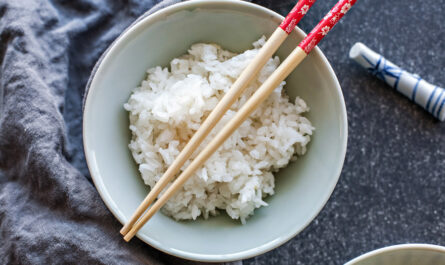If you love sushi, you know that the rice is crucial. Perfectly cooked sushi rice can make or break your sushi experience. However, achieving that perfect texture can be a challenge. Many sushi enthusiasts encounter the common problem of soggy sushi rice. This can be frustrating, especially when you’re trying to impress guests or simply enjoy a homemade sushi night. In this article, we’ll explore various soggy sushi rice tips to help you achieve the perfect sushi rice every time.

Understanding Sushi Rice
Before diving into the solutions, it’s essential to understand what makes sushi rice unique. Sushi rice, also known as shari, is a specific type of short-grain rice that is sticky and slightly sweet. It’s seasoned with a mixture of vinegar, sugar, and salt, giving it the distinct flavor that pairs so well with fresh fish and other sushi ingredients.
Why Does Sushi Rice Become Soggy?
Understanding why your sushi rice might be soggy is the first step in solving the problem. Here are some common reasons:
- Excess Water: Using too much water during cooking is a primary cause of soggy rice.
- Improper Rinsing: Failing to rinse the rice thoroughly can leave excess starch, leading to a mushy texture.
- Overcooking: Cooking the rice for too long can break down the grains, causing them to become mushy.
How to Avoid Soggy Sushi Rice
Now that we know why sushi rice can become soggy, let’s look at some soggy sushi rice tips to avoid this culinary mishap.
Rinse the Rice Properly
Rinsing your rice is crucial to remove excess starch. Rinse the rice under cold water until the water runs clear. This simple step can significantly improve the texture of your sushi rice.
Measure Water Accurately
Using the correct water-to-rice ratio is vital. Typically, a 1:1.25 ratio of rice to water works well for sushi rice. However, this can vary depending on the type of rice and your personal preference. For more detailed information on rice types, you can refer to this guide on rice varieties.
Use the Right Rice Cooker
Investing in a good-quality rice cooker can make a significant difference. A rice cooker with a sushi rice setting can help you achieve the perfect consistency without guesswork.
Let the Rice Rest
Once the rice is cooked, let it rest for about 10 minutes with the lid on. This allows the moisture to distribute evenly throughout the rice, resulting in a better texture.
Season the Rice Correctly
Seasoning your sushi rice with the right proportions of vinegar, sugar, and salt is crucial. Too much liquid in the seasoning can contribute to sogginess. Follow a trusted recipe or try these flavored sushi rice recipes to get it just right.
Common Mistakes to Avoid
Even with the best intentions, mistakes can happen. Here are some common pitfalls to avoid:
- Skipping the Rinse: Never skip rinsing your rice.
- Ignoring Rest Time: Allow the rice to rest after cooking.
- Overseasoning: Use the correct amount of seasoning.
FAQs
How can I fix soggy sushi rice?
If your sushi rice is already cooked and soggy, try spreading it on a baking sheet and letting it cool. This can help remove excess moisture.
What type of rice is best for sushi?
Short-grain rice is ideal for sushi, as it has the right amount of stickiness and texture. For more alternatives, consider these sushi rice alternatives.
Can I use a regular pot to cook sushi rice?
Yes, you can use a regular pot, but it requires close attention to the cooking time and water ratio to avoid sogginess.

Conclusion
Mastering the art of sushi rice is a rewarding endeavor. With these soggy sushi rice tips, you can elevate your sushi-making skills and enjoy perfect sushi at home. Remember, practice makes perfect, and with time, you’ll be crafting rice worthy of the finest sushi restaurants.
This article contains affiliate links. We may earn a commission at no extra cost to you.




